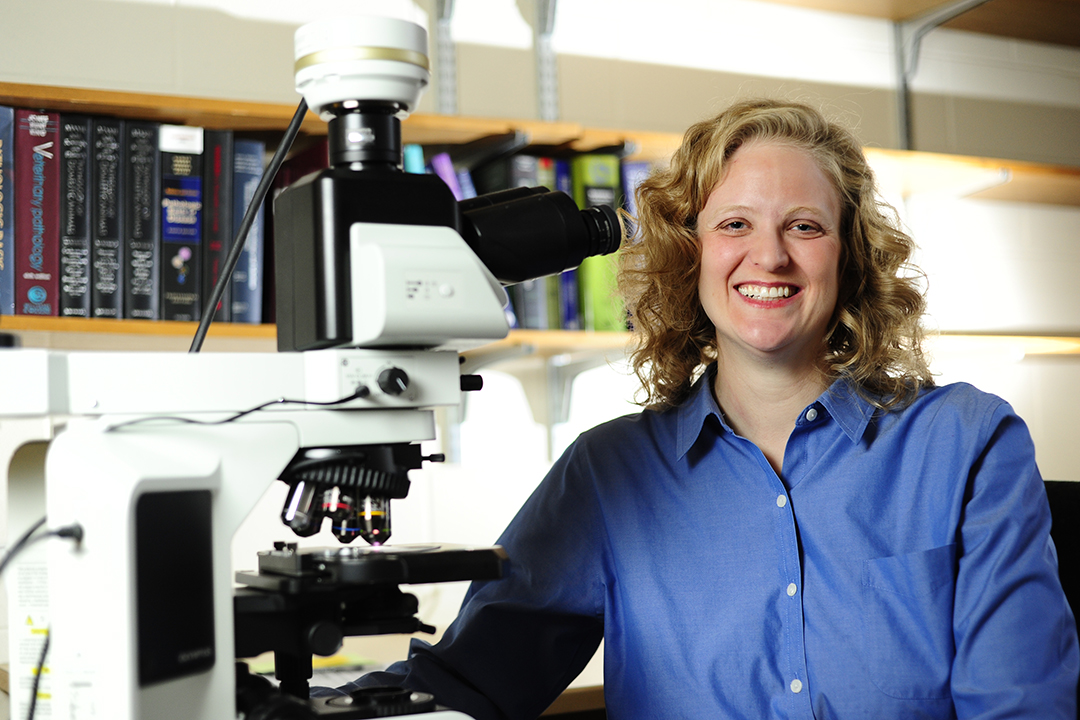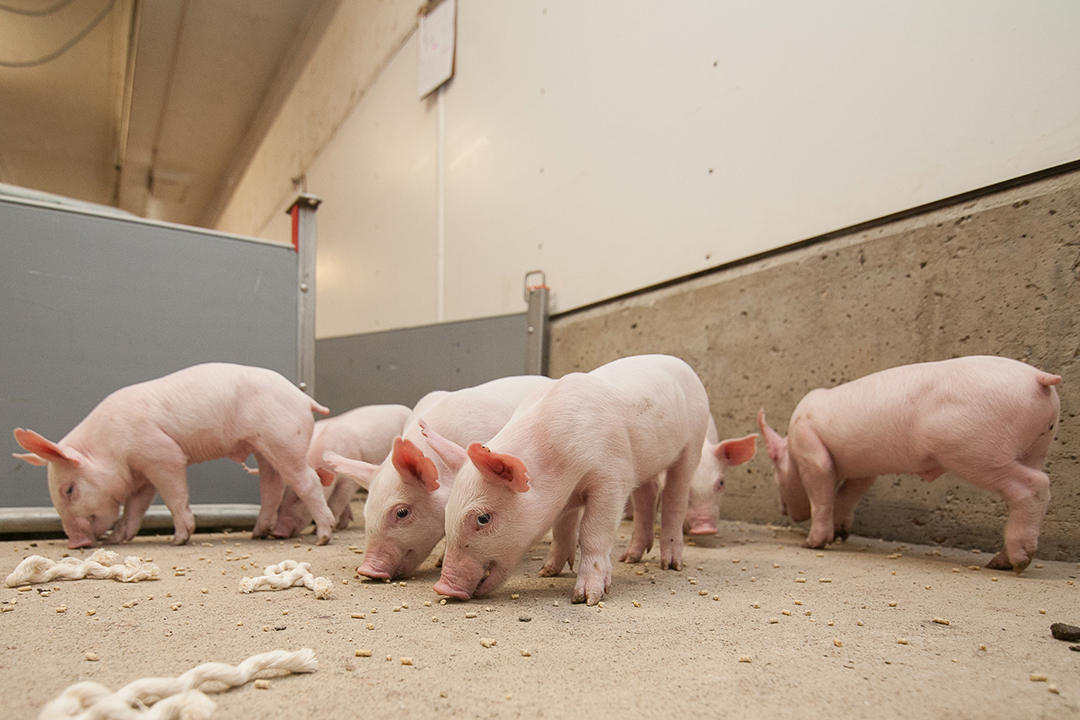
Building a better influenza vaccine for pigs
When people contract influenza A virus — commonly known as “the flu” — the symptoms start within 24 hours and peak by 48 hours of infection. People have a few days of sickness that can include fever, runny nose, eye inflammation, loss of appetite and a lack of energy as well as coughing that can last two weeks.
By Sarah ThomasWhen pigs get “the flu,” the symptoms are very similar but on a much large scale. It can begin with a few sick animals and then result in thousands of sick young pigs. While most pigs will recover from the infection, a small number will develop pneumonia and may die from complications.
In addition to animal health concerns, there are financial issues for swine producers. For example, infected pigs usually have a loss of appetite, which slows down their growth rates. That means the animals take longer to reach optimum selling weights, and as a result, swine producers make less profit per pig — whether it’s from selling them at smaller weights or by feeding them longer.
By vaccinating their sows every four to six months, producers can protect sows and newborn pigs from the full effects of influenza. But as is the case with human influenza vaccines, influenza vaccines for pigs need to be updated regularly to ensure the best protection possible by matching the vaccine strains with what is circulating in the population.
Updated vaccines for pigs is a research focus for Dr. Susan Detmer, a veterinary pathologist and associate professor at the Western College of Veterinary Medicine (WCVM). As the only researcher doing active surveillance of influenza A viruses in western Canadian pigs, she’s carrying out work that’s critical to the swine industry.
“We aim to produce a readily available, regionally effective vaccine for pigs — essential for ensuring the health and welfare of western Canadian swine herds and preventing economic losses,” says Detmer.
Detmer and her research team send out sample collection kits, grow viruses and undertake live pig trials to characterize the different strains of influenza A that are present in the pig population — information that’s vital for determining the appropriate vaccines.
As well, she regularly contributes virus sequence data to the Influenza Research Database, a public database of information about the influenza A viruses that are present around the world in all species, including humans. This data is crucial for human and animal health as well as herd management.
Human health link

Commercial influenza A vaccines have successfully protected North American swine herds, but in the past few years, available vaccines have been less effective — particularly in Canadian pigs. Since influenza A viruses constantly change, virus strains are now much different from the older vaccine strains making them less useful in vaccines. Some of these viruses are also unique to a region such as Western Canada and are not often seen outside of the region.
“To further complicate matters, influenza viruses of humans and pigs are very similar, and some of the same influenza A viruses we deal with here can infect both species,” says Detmer.
She points out that human health also depends on using vaccines that effectively protect pigs from the newer strains of influenza A virus, so they are not exposed to them.
When human influenza A viruses spread to pigs, they can mix with pig influenza A viruses and form a reassortant virus (having genetic material from two or more viruses). People and pigs have similar virus receptors in their respiratory tracts, so this mixing could occur in humans or pigs.
Detmer and her team are developing and testing new experimental pig influenza A vaccines that are aimed at protecting against current virus strains present in western Canadian pig populations.
The researchers began by acquiring lung, saliva samples and nasal swabs from pigs at farms that had experienced low protection from the current vaccine or had no vaccine in use. Once the virus was isolated from the samples in cell cultures and verified as positive by PCR assay, the hemagglutinin gene of the viruses were sequenced to determine the type of virus. The research team used phylogenetic analysis to determine the genetic relationships of the viruses throughout the region.
Next, they collected serum from pigs that had been vaccinated with commercial vaccines or single strain vaccines made by an autogenous vaccine producer in Ontario. These pigs had quantifiable antibodies in their blood to protect against the virus strains within the vaccines as well as to genetically similar strains.
Once the researchers determine the relationships of influenza viruses throughout the region, they can measure expected cross protection of a new vaccine to other virus strains of flu using these same methods.
The Saskatchewan Ministry of Agriculture, Saskatchewan Agriculture Development Fund, Alberta Agriculture and Forestry, Merck Animal Health and the Natural Sciences and Engineering Research Council of Canada (NSERC) have provided funding for the Detmer lab’s surveillance and influenza research work.
Sarah Thomas of Calgary, Alta., is a second-year veterinary student at the Western College of Veterinary Medicine (WCVM) whose research position was supported by the college’s Interprovincial Undergraduate Student Summer Research program. Her story is part of a series of articles written by WCVM summer research students.
